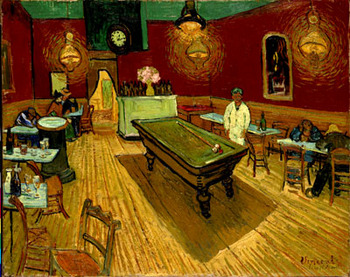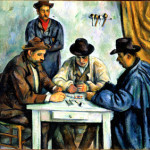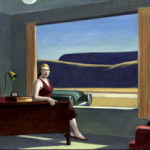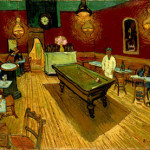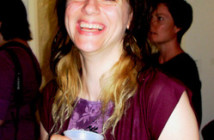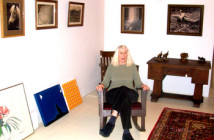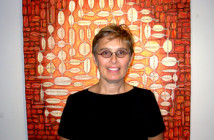The first patent for a mechanical sewing machine was awarded to a British inventor, Thomas Saint, in 1790 but it is not known if he built a prototype. In 1834 Walter Hunt built America’s first, somewhat successful sewing machine. He lost interest in seeking a patent because of concern that it would result in unemployment. Instead Elias Howe secured a patent in 1846 for a “process that used thread from two different sources.” Sewing machines were introduced to mass production by Isaac Singer in 1850 but Howe sued for patent infringement and won in 1854 which entailed royalties of some $200,000 annually. A drop in the bucket as the market for Singer’s sewing machines expanded globally.
The complex and expensive law suits brought Singer to Edward Clark, a Williams College graduate and attorney. He wisely negotiated a share of stock that greatly increased over time as he became every more involved in the expanding business, and Singer proved to be more interested in philandering. Singer had several children by various wives and mistresses. Eventually Edward Clark presided over one of the great American fortunes of his generation which passed to his son Alfred Corning Clark and Elizabeth Scriven Clark. He died fairly young and she remarried to Reverend Henry Codman Potter. Alfred and Elizabeth produced four sons: Edward Severin, Sterling, Ambrose, and Stephen. The family invested in New York City real estate and the sons inherited, literally, separate blocks of prime, West Side, mid town property. Stephen got 86th street and between Columbus and Central Park, Ambrose inherited 73rd street and Edward Severin acquired 72nd street. Sterling received a mixed parcel including parts of West 55th and 54th streets. Edward Clark commissioned the architect Henry J. Hardenbergh to build the Dakota Apartments on 71st street. It included a grand suite, some 20 plus rooms, inherited by his son Edward Severin, which was rarely occupied. It was called the Dakota because it was quipped as being so far from the center of things. The Dakota was the home of John and Yoko Lennon at the time of his murder just outside.
The family also bought several farms and became the dominant land owners in Cooperstown, New York, from which the eldest son, Edward Severin, seldom ventured. He shared a love of horses with his brother Ambrose. Although the eldest, Edward is delicately described as gentle and not firm of mind or body. So the management of the family business and trust fell to Stephen who apparently resented its great demands and responsibilities.
Particularly as Sterling was an adventurer who participated in the Boxer Rebellion. There is a handsome 1900 photo of him looking quite dashing in uniform. Mustered out he traveled in the Far East before finding his way to Paris (he served as a liason officer during WW1) where he renovated an elaborate town house and started to collect while furnishing his home. First, like other mega wealthy Americans, he dabbled in the Old Master market, acquiring a superb and expensive painting by Piero Della Francesca, Virgin and Child with Four Angels, for 35,000 pounds sterling or about $170,000, as well as works of dubious provenance. Compared to six figures for Old Masters he was pleased to acquire his first of several works by the American Winslow Homer for just a fraction of the Piero, at about $10,000.
Initially the brothers, Stephen and Sterling, corresponded with mutual support and interest. But there was an early dispute about how the paintings in the estate of their mother had been divided. Because of seniority of birth (Edward has passed away by then) Sterling felt he should have had first pick. But Stephen argued that he was traveling the world at the time and they never imagined that he would settle down long enough to occupy a home suitable for hanging works of art. Eventually Sterling inherited Gerome's The Snake Charmer, while Ambrose acquired another Gerome masterpiece, Pollice Verso (Thumbs Down) a highly detailed rendering of the grim result of a Roman gladiator contest. The latter painting was later sold to the Phoenix Art Museum and it is currently on view at the Clark.
As a result of Sterling's dispute with his brothers about their inheritance it became clear that he was serious about building his own collection. He spoke fluent French and plunged into the social and artistic life of the city.
Exploring the night life of Paris led him to enjoy the theatre and the company of a beautiful young actress Francine Clary. She was the daughter of a single mother and was in turn the single mother of a daughter. This was just not acceptable to Stephen. When Sterling proposed, in the 1920s, to designate Francine and her daughter as the heirs to his shares of the family trust, at the time that represented some $20 million, there was a quarrel that led to a fist fight. After years of silence Sterling sent a note to Stephen on the occasion of the death of his son but there was no further attempt to reconcile.
The feud between the brothers was so intense that one wonders what they would have thought of this remarkable and insightful project to bring together a selection of masterpieces from two of the greatest American collections of the first half of the 20th century. This thoughtful and highly selective exhibition, just a small sample of their vast holdings given the modest scale of the Clark’s special exhibition galleries, provides the provocative opportunity to compare and contrast the taste and vision of similar but different personalities and collections.
Initially they explored acquiring property and creating a private museum in New York, in the manner of the Frick, or the Gardner Museum on Boston. The catalogue discusses comparisons to earlier American collections as well as the peers of the brothers. There were also ideas about building a major museum in Cooperstown. To a lesser extent Stephen did that founding several museums including The Baseball Hall of Fame. Stephen also built a major private hospital and endowed other charities.
While Sterling built a private collection which he rarely allowed to be shown, and then, anonymously, Stephen was more public and became a founding trustee of the Museum of Modern Art, a trustee of the Metropolitan Museum of Art, to which he bequeathed major works, as well as to the Addison Gallery of Phillips Academy in Andover, Mass. and to Yale University of which he was an alumnus. So the major works acquired by Stephen were dispersed to great museums while Sterling and Francine opted to build one of the best endowed small private museums in America, in Williamstown, Mass. the site of Williams College from which the founder of the family fortune, Edward, Sterling’s grandfather, had graduated.
In establishing the Clark Art Institute the founders did not set forth the binding restrictions of that towering ego, Mrs. Jack Gardner. Instead the Clark has been able to grow, expand and define its role as a major museum and educational, research institution. Although the acquisitions and special exhibitions of the Clark much reflect the spirit and taste of the founders and the range of their collection from Old Masters and 19th Century American, British and especially French art.
While the accompanying, densely informative, profusely illustrated, 370 page catalogue sets forth the complex history of the family and the collections of the brothers, it does so with restraint and tact. The writing of Michael Conforti, director of the Clark, is superb, even riveting, but you sense that he holds back and is constrained by the sensitivity of his position. His text proves to be a real page turner particularly in aspects of the juicy and gossipy elements of the family feud. Was the handsome, rich and adventurous Sterling really a stage door Johnny who married a show girl? In view of that was Stephen correct in barring her and an illegitimate daughter from inheriting a share of the family trust? Was Stephen justified in his resentment of managing the money that Sterling spent? These are matters of family and biography which are beyond the scope of art history and an exhibition catalogue. But is a potential author listening? How about an unauthorized, no holds barred account of the Clarks? We are, however, grateful to Conforti for giving us a tactful version of this enticing drama.
Having looked at, absorbed, studied and lived with this exhibition for several weeks I have come to the tentative conclusion that Stephen was the more interesting and adventurous collector with greater nerve and a sharper eye. While Sterling got hung up on sentimentality and all those treacley Renoirs, to what extent the influence of Francine, Stephen moved beyond Impressionism and Post Impressionism to embrace Picasso and Cubism. In their taste for American art Sterling fixated on Homer and Sargent, acquiring super examples. But Stephen moved on to Edward Hopper. He gave Hopper's House by the Railroad to the Museum of Modern Arts as one of its first acquisitions. You get the sense that Stephen was tough and risky,represented by works such as Café at Night, by van Gogh, a gift to Yale, or Cezanne’s The Card Players which he gave to the Met.
Comparing the taste of the two collecting brothers evokes another pair of Parisian based siblings, Leo and Gertrude Stein. Leo started collecting first, and actually trained and influenced Gertrude. But Leo (perhaps like Sterling) stayed behind with Post Impressionism, while Gertrude (like Stephen) forged ahead with Picasso and Matisse. They too had a falling out. Unfortunately Gertrude’s great collection was dismantled by her heirs (three siblings and their descendants) who did not recognize her “gay marriage” to the famous Alice B. Toklas. By comparison the collection of Gertrude’s friends, the spinsters Etta and Claribel Cone, with its depth in Matisse, remained intact and is now owned by the Baltimore Museum of Art.
One of the sagas of art history is the creation and dispersal of great collections. One may only imagine the result if Stephen had opted, like Sterling, to keep his holdings intact and under one roof. Hands down it would outshine the Clark Art Institute. In a couple of weeks we plan to visit Cooperstown and report on the complex of small museums, and the Baseball Hall of Fame, that Stephen founded. So anticipate a sequel to this coverage. And we will also look forward to the further programming of the Clark Art Institute on the occasion of its 50th year. The Brothers Clark, indeed.
Links:
Clark Art Institute
"The Clark Brothers Collect: Impressionist and Early Modern Paintings" is on view June 4 through September 4 at The Sterling and Francine Clark Art Institute.
All images are courtesy of their respective institution.

